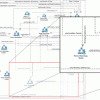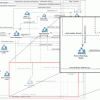Strategic advice to leverage new technologies
Technology is at the heart of nearly every enterprise, enabling new business models and strategies, and serving as the catalyst to industry convergence. Leveraging the right technology can improve business outcomes, providing intelligence and insights that help you make more informed and accurate decisions. From finding patterns in data through data science, to curating relevant insights with data analytics, to the predictive abilities and innumerable applications of AI, to solving challenging business problems with ML, NLP, and knowledge graphs, technology has brought decision-making to a more intelligent level. Keep pace with the technology trends, opportunities, applications, and real-world use cases that will move your organization closer to its transformation and business goals.
Recently Published
The business analysis profession is in the midst of change. Work is underway within organizations and associations to formalize and standardize what it means to be a business analyst (BA). The role has had a long and tortuous existence. A child of necessity, the role evolved to bridge the gap between what those responsible for operating an organization wanted to do and what those responsible for implementing technology were able to deliver.
Big initiatives require big thinking. Transformational initiatives magnify the struggles of a typical project: vague objectives, compressed timelines, scope creep, and communication issues. They also introduce their own unique challenges: vast stakeholder lists, extreme complexity, and unknown interdependencies. These undertakings require a different approach, a bigger type of thinking than for a traditional IT project.
Over the last two decades, medical science has made significant progress in understanding the molecular mechanisms involved in the progression of cancer, and this progress has been accompanied by the development of new and more effective treatments. Yet the way in which cancer care is delivered and coordinated has by and large remained the same. Once diagnosed with cancer, most patients receive their care in a linear fashion.
Considerations for Scalability
We hear executives talk about customer experience and how excellent customer experience drives business. The intent is clear, but the execution is often poor. Why? Because customer experience is a deliberate choice and involves careful planning. Only when the right customer experience matches the customer goals will the plan succeed. But how do we achieve this?
The business analysis profession is in the midst of change. Work is underway within organizations and associations to formalize and standardize what it means to be a business analyst (BA). The role has had a long and tortuous existence. A child of necessity, the role evolved to bridge the gap between what those responsible for operating an organization wanted to do and what those responsible for implementing technology were able to deliver.
Over the last two decades, medical science has made significant progress in understanding the molecular mechanisms involved in the progression of cancer, and this progress has been accompanied by the development of new and more effective treatments. Yet the way in which cancer care is delivered and coordinated has by and large remained the same. Once diagnosed with cancer, most patients receive their care in a linear fashion.
Over the past year, business architecture crossed a major threshold in terms of standardization, industry awareness, and business engagement. It is now viewed as an important business discipline that executives should pursue. While early efforts emphasized capability mapping and value stream analysis, other aspects of business architecture are now being incorporated into more and more projects. In addition, business architecture in practice is currently being leveraged by a growing body of business professionals, such as planning teams, business analysts, portfolio managers, and management teams.













